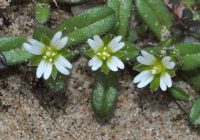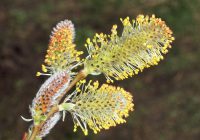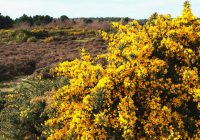Dr Phil Smith’s Wildlife Notes
March 2014
In complete contrast to last year’s frigid conditions, March 2014 was warmer, sunnier and slightly drier than normal with rainfall on 10 days. This meant that the earlier wildflowers appeared on time and in plentiful supply. Indeed, by mid-month, the tiny dune or winter annuals were as abundant as anyone could remember, raising spirits after a long winter. These miniature beauties are mostly white-flowered, the earliest, Common Whitlow-grass, soon being joined by Sea and Little Mouse-ear, together with Hairy Bitter-cress in the damper spots. A little later, the gorgeous bright-blue Early Forget-me-not can be found, often associating with Thyme-leaved Sandwort, though like all these plants, good eyesight or scrambling around on hands-and-knees are needed to locate the choicest specimens.
Our most notable annual, confined to dunes west of Southport Marine Lake, is the nationally rare Early Sand-grass, first discovered here in 1996. Regular surveys show that this “smallest grass in the World” is increasing. A visit at the end of the month with Patricia Lockwood found the plant more extensive and luxuriant than ever, its flowers giving a bronze tinge to the heavily rabbit-grazed grassland. Grazing by Rabbits and, in places, Canada Geese, together with human trampling, are vital to maintain the short open sward favoured by this diminutive plant.
The other great botanical joys of March are willow and poplar catkins. My walk around the Wicks Lake area of Formby Point on 21st was enlivened by spectacular displays of Osier, the hybrid Fine Osier, Grey and Goat Willow, males of the two latter species having the familiar “pussy-willow”. Rarely, male Grey Willow catkins are red-tinged for reasons that have never been satisfactorily explained. Female catkins tend to be less visually attractive, though still interesting. Nearby were the stunning non-native Violet and Siberian Violet-willow, which are sometimes grown in gardens, while the bright-red male catkins of the Black Poplar were just beginning to show. South of Wicks Lake, I enjoyed long-established colonies of Primroses and Corsican Hellebore on a west-facing bank. These are garden-escapes here, as are several patches of Sweet Violet. Two large rounded dunes west of the lake were covered in annuals and I returned a few days later with Catherine Highfield to record some quadrats for her long-term study of annual communities.
Also not to be missed at this time of year is Purple Willow, so I made a pilgrimage on 24th to see its superb male catkins at the south end of Larkhill Heath, Formby. Both here and, more especially, at Freshfield Dune Heath Nature Reserve, Gorse was flowering in golden abundance. However, this plant can become invasive and some Gorse had been cut back by the site managers at both these heathlands to improve conditions for other important denizens, especially reptiles. Other important management work included the digging of new scrapes for Natterjack Toads at Hightown dunes and Birkdale funded by Sefton Council’s Landscape Partnership Scheme.
The favourable weather also brought out lots of insects, including Peacocks and Small Tortoishells emerging from hibernation in remarkably good condition. Queen Bumble-bees were widespread and, as usual, the Red Data Book-listed Vernal Mining Bee began to appear late in the month.
Bird highlights included a winter-plumaged Slavonian Grebe that attracted numerous birders, including me, to Southport Marine Lake early in the month. Although small numbers are reported most winters, this bird is not easy to see in our region. The Long-tailed Duck was still at Marshside most of the month, while another long-stayer was a Siberian Chiffchaff that Trevor Davenport and I went to see at Martin Mere on 12th. After a long walk to the far side of the reserve, we heard its distinctive song twice and had brief views. The usual spring migrants, such as Wheatears, were reported from mid-month but I didn’t bump into any until 30th, when as many as 18 were strutting their stuff near the Weld Road carpark at Birkdale.




